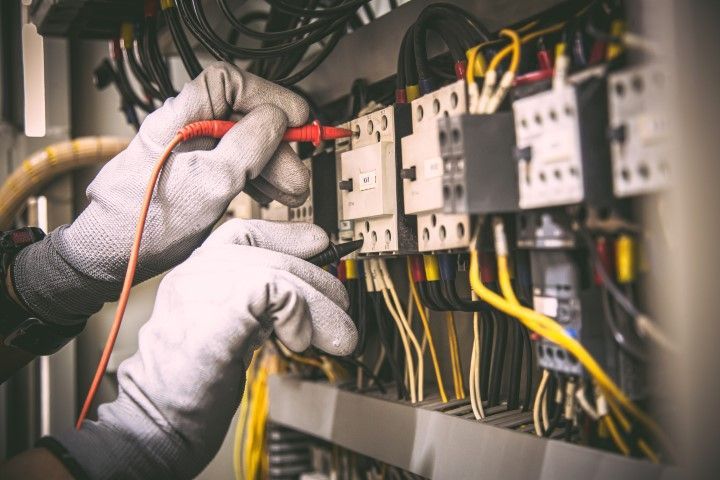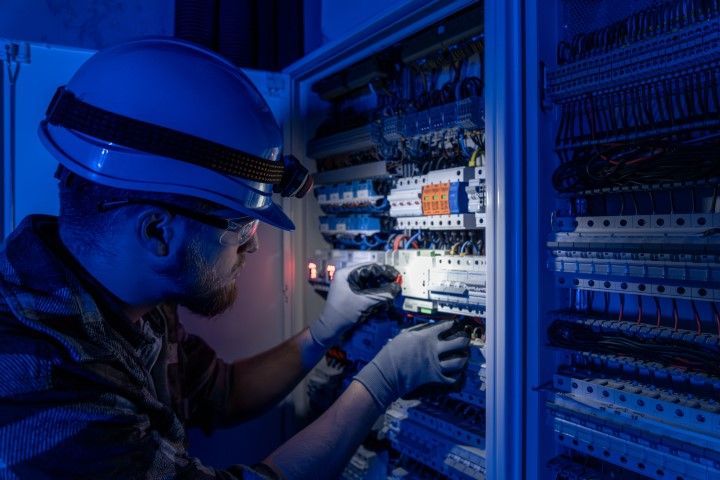Electrical Maintenance and Repair Services in Belmont MA
When it comes to keeping your home or business safe, proper electrical maintenance is one of the most important steps you can take. Faulty wiring, outdated systems, and neglected repairs can all lead to serious problems if left unchecked. We understand how essential it is to have dependable electrical maintenance and repair services in Belmont, MA you can count on. That’s why we’ve developed a clear and effective process to make sure each project is handled with care and attention. At Bright Path Electrician, our team works hard to keep your systems running smoothly, whether you need a small repair or ongoing support.
Inspection and Assessment
The first step in our process is a detailed inspection of your electrical system. We look at all key components, including panels, wiring, outlets, and switches. This helps us understand the current condition of your setup and spot any signs of wear or damage. By assessing everything carefully, we can create a plan that matches your needs and avoids unnecessary work. A trained electrician will explain their findings in clear terms, so you know exactly what is happening in your home or building.
Planning and Preparation
Once we’ve completed the inspection, we move on to planning. This part of the process includes outlining the tasks that need to be done and gathering any materials required for the job. We also schedule the work at a time that suits you best. Our team believes good preparation is the key to efficient service. With a clear plan in place, we can avoid delays and complete the project faster. We also make sure to follow all safety rules and local codes in Belmont to protect you and your property.

Repair and Maintenance Work
After planning, we get to work on repairs or maintenance. This can involve replacing damaged wires, upgrading old fixtures, fixing outlets, or installing new safety devices. We always aim to cause as little disruption as possible. Our crew uses proven tools and methods to complete each task correctly the first time. Whether you have a flickering light, a tripped breaker, or a more complex issue, we handle it with skill and care. The goal is to restore full function to your system and give you peace of mind.
Testing and Follow-Up
The final step is testing and follow-up. We check all repaired or updated areas to confirm everything is working as it should. This helps prevent future problems and makes sure your system is safe to use. We also offer guidance on how to maintain your electrical setup between visits. If you ever have questions or concerns, we are only a call away. Our commitment doesn’t end when the work is done. We’re here to support you for the long term.
If you need reliable electrical maintenance and repair, we’re ready to help. Our process is designed to be clear and effective, so you always know what to expect. Reach out to our team today to schedule an appointment or learn more about how a qualified electrician can protect your home or business. Your safety and satisfaction are our top priorities.
Types of Electrical Maintenance
Electricity powers almost everything we use in our daily lives. From lights and appliances to computers and machines, a steady flow of electricity is essential. But to keep electrical systems working safely and efficiently, regular maintenance is necessary. Whether in homes, offices, or large factories, taking care of electrical equipment helps prevent sudden failures and reduces risks. Understanding the different types of electrical maintenance can help you plan ahead, avoid emergencies, and save money over time.
Corrective Maintenance
Corrective maintenance happens when something goes wrong, and repairs are needed right away. This is often called “breakdown maintenance” because it only takes place after a problem occurs. For example, if a circuit breaker trips repeatedly or a light fixture stops working, you must act quickly to fix it. This type of maintenance can be stressful and costly because the failure usually interrupts work or daily activities. While it’s impossible to avoid all sudden issues, regular inspections can help catch problems early so they don’t turn into big repairs later.
Preventive Maintenance
Preventive maintenance means checking and servicing electrical systems regularly, even if nothing seems wrong. The purpose is to stop issues before they happen. This can include tightening connections, cleaning parts, testing circuits, and replacing worn-out components. For instance, an electrician might inspect switchboards, look for signs of overheating, and measure voltage levels to make sure everything is working within safe limits. Preventive maintenance is often planned on a schedule—every few months or once a year—so you can keep things running smoothly and reduce the chance of unexpected breakdowns.
Predictive Maintenance
Predictive maintenance takes preventive care one step further by using technology to forecast when a problem might happen. Special tools and sensors track equipment performance and collect data over time. For example, a thermal camera can spot hot spots inside electrical panels, or vibration sensors can detect issues in motors before they fail. This approach helps you fix parts only when they show signs of wear, which saves time and money compared to replacing everything on a set schedule. Predictive maintenance is commonly used in large facilities and industries where equipment is critical to operations.
Condition-Based Maintenance
Condition-based maintenance focuses on the actual state of equipment rather than time or usage. It involves monitoring factors like temperature, current, and insulation resistance. When certain indicators reach a limit, maintenance is carried out. Unlike predictive maintenance, which relies on trends and forecasts, condition-based maintenance responds to real-time data. This way, you can avoid unnecessary work and focus resources where they’re needed most. It’s a practical method for keeping systems safe without over-maintaining them.
Keeping your electrical systems in good condition requires knowledge, skill, and the right tools. Whether you need urgent repairs or a routine inspection, our team is ready to help. An experienced residential and commercial electrician can assess your situation and recommend the best type of maintenance for your needs. Don’t wait for problems to disrupt your day—reach out to us today to schedule service or ask questions. We look forward to providing you with dependable solutions and peace of mind.
Common Electrical Repairs
Electricity powers nearly everything in our homes and workplaces, so it’s no surprise that electrical issues are common. Knowing what to watch for and when to get help can prevent bigger problems later. Whether you feel confident handling simple fixes or prefer to call a professional, understanding the most common electrical repairs will keep your property safer and more efficient.
Faulty Light Switches
One of the most frequent electrical problems involves light switches that stop working or feel warm to the touch. Sometimes, a switch may flicker or fail to turn the light on at all. This can happen because of loose wiring, worn-out parts, or connections that have become damaged over time. Replacing a switch usually isn’t complicated, but it’s important to turn off the power before doing any work. If you’re unsure, it’s best to hire an electrician to avoid electrical shock.
Circuit Breaker Tripping
Circuit breakers are designed to protect your system from overload. When too many appliances run at the same time, or if there’s a short circuit, the breaker trips and cuts off power to that area. Occasional tripping may not be serious, but if it happens regularly, it could signal a wiring issue or a problem with one of your devices. Replacing old breakers or adding extra circuits can help prevent this from happening repeatedly.
Dead Outlets
An outlet that suddenly stops working is a common repair need. Often, it’s caused by a tripped breaker, but other times, the outlet itself has failed. This can occur if the wiring behind it has become loose or burned. You might also notice scorch marks or a burning smell, which means you should stop using the outlet immediately. A professional can test the wiring and install a new outlet if needed.
Flickering Lights
If your lights flicker or dim when you turn on appliances, it can indicate a loose connection or a load issue in your electrical panel. In some cases, this is a minor problem, but it can also be a sign of outdated wiring that needs an upgrade. Persistent flickering should be inspected to avoid the risk of electrical fires.
Damaged Wiring
Wires can wear out or get damaged by pests, water, or old age. Exposed or frayed wiring poses a serious hazard and should never be ignored. You may notice buzzing sounds, frequent breaker trips, or outlets that spark when you plug something in. Replacing damaged wiring is not a do-it-yourself task; it requires a trained professional to ensure safety and compliance with electrical codes.
GFCI Outlet Problems
Ground Fault Circuit Interrupter outlets are required in areas with water, like kitchens and bathrooms. These outlets protect you by shutting off power when a fault is detected. If your GFCI outlet won’t reset or keeps tripping, it could be defective or wired incorrectly. Replacing it or repairing the connections is essential for proper protection.
If you’re experiencing any of these issues, don’t wait for them to get worse. Electrical problems can lead to serious damage or injury if left unchecked. Our team is here to help with repairs, upgrades, and inspections. Call us today to schedule service or ask questions about your home’s wiring. Whether you need a quick fix or a major update, our skilled commercial and residential electrician is ready to assist you. Your safety and peace of mind are always our top priorities.


